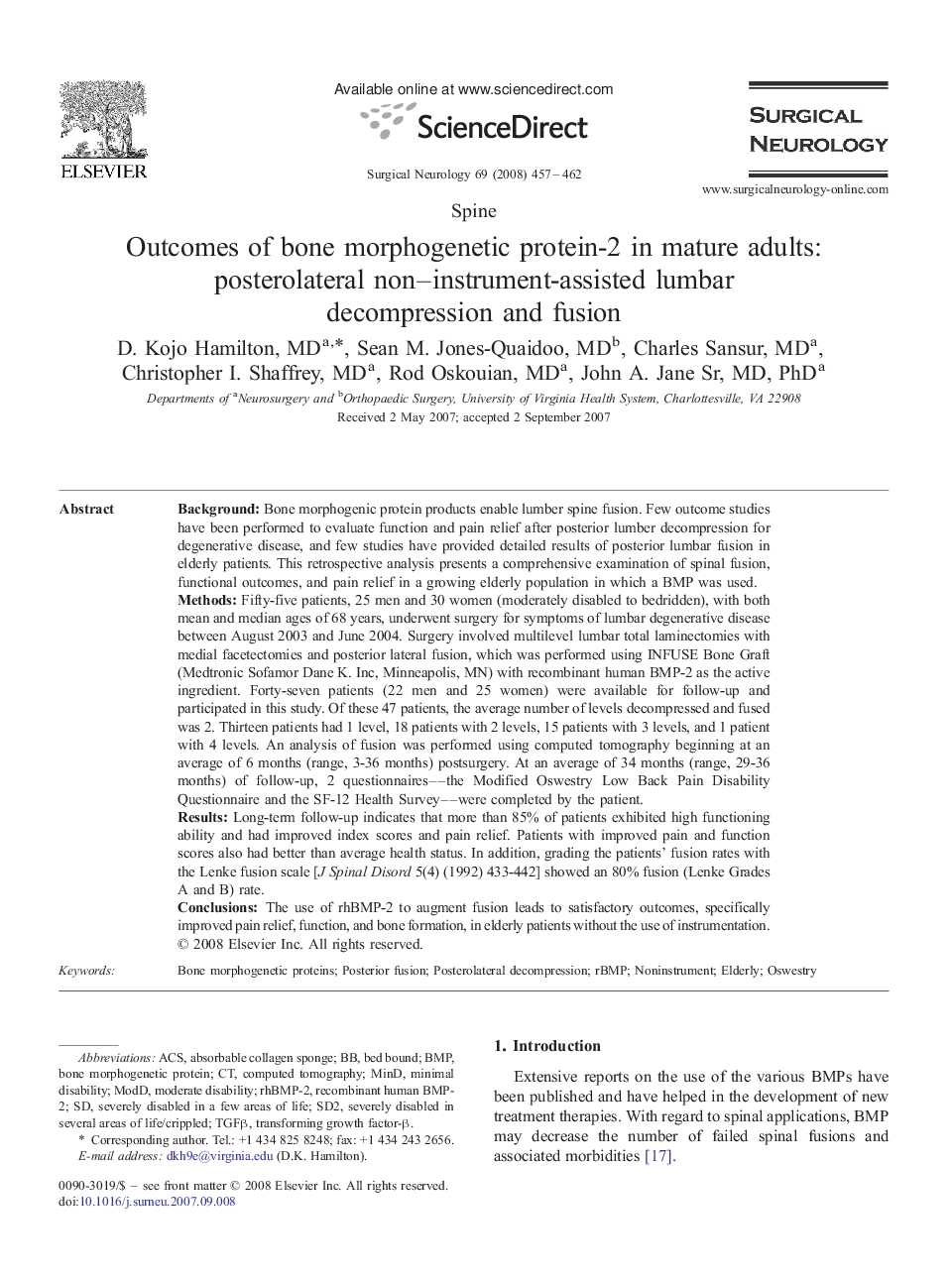| Article ID | Journal | Published Year | Pages | File Type |
|---|---|---|---|---|
| 3093037 | Surgical Neurology | 2008 | 5 Pages |
BackgroundBone morphogenic protein products enable lumber spine fusion. Few outcome studies have been performed to evaluate function and pain relief after posterior lumber decompression for degenerative disease, and few studies have provided detailed results of posterior lumbar fusion in elderly patients. This retrospective analysis presents a comprehensive examination of spinal fusion, functional outcomes, and pain relief in a growing elderly population in which a BMP was used.MethodsFifty-five patients, 25 men and 30 women (moderately disabled to bedridden), with both mean and median ages of 68 years, underwent surgery for symptoms of lumbar degenerative disease between August 2003 and June 2004. Surgery involved multilevel lumbar total laminectomies with medial facetectomies and posterior lateral fusion, which was performed using INFUSE Bone Graft (Medtronic Sofamor Dane K. Inc, Minneapolis, MN) with recombinant human BMP-2 as the active ingredient. Forty-seven patients (22 men and 25 women) were available for follow-up and participated in this study. Of these 47 patients, the average number of levels decompressed and fused was 2. Thirteen patients had 1 level, 18 patients with 2 levels, 15 patients with 3 levels, and 1 patient with 4 levels. An analysis of fusion was performed using computed tomography beginning at an average of 6 months (range, 3-36 months) postsurgery. At an average of 34 months (range, 29-36 months) of follow-up, 2 questionnaires––the Modified Oswestry Low Back Pain Disability Questionnaire and the SF-12 Health Survey––were completed by the patient.ResultsLong-term follow-up indicates that more than 85% of patients exhibited high functioning ability and had improved index scores and pain relief. Patients with improved pain and function scores also had better than average health status. In addition, grading the patients' fusion rates with the Lenke fusion scale [J Spinal Disord 5(4) (1992) 433-442] showed an 80% fusion (Lenke Grades A and B) rate.ConclusionsThe use of rhBMP-2 to augment fusion leads to satisfactory outcomes, specifically improved pain relief, function, and bone formation, in elderly patients without the use of instrumentation.
